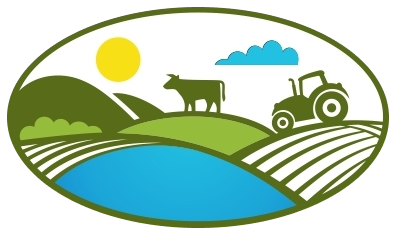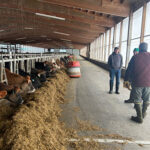
This Nutrient Management Minute is brought you to by Kirsten Workman, Agronomy Specialist for the Champlain Valley Crop, Soil, and Pasture Team of UVM Extension. She also serves as CVFC’s Board Secretary.
As you all know, the Vermont manure spreading ban ends on April 1st. Weather allowing, manure spreading will start shortly thereafter. As many farms around the state (LFO, MFO, and CSFO) are updating your nutrient management plans (NMP) for the 2021 cropping season, it is important to talk about manure sampling. The Natural Resource Conservation Service (NRCS) recently updated the standard that outlines what is required in an NMP, also known as the 590 standard. The language outlining manure sampling requirements was also updated, and is as follows:
“Manure or other agricultural waste storages will be sampled annually as close as possible to the time of application (upon thorough agitation of liquid systems) or more frequently if needed to account for operational changes (e.g.., feed management, animal type, manure handling strategy, etc.) impacting manure nutrient concentrations. Satellite waste storage facilities must be sampled if the manure is stored there more than 3 months; however, if the storage is used temporarily then it can use the main storage where it was transferred from as the sample for planning purposes. An average of all of the waste storage facilities on the farm shall not be used to develop the NMP. Weighted averages of manure samples may be used when storage facilities are mixed, for example when storage facilities are physically connected, or waste is transferred between storages. Weighted averages must consider the volume of manure per the sample value to give a new weighted average. Actual manure sample values collected by the farm must be used in the NMP in lieu of textbook values when available sample values are less than five years old. Sample values older than five years cannot be used in developing an average manure value. Out of the five most recent annual sample manure values, the highest and lowest values are to be removed, leaving three values left to be averaged and used as the final manure sample value, allowing for a realistic manure sample average to be established.”
That’s a long description, so I will try and highlight the important parts here:
- Each manure storage on the farm should be sampled every year. These samples should be used in developing the NMP. No sample older than five years should be used in this planning.
- You should sample a well agitated pit (liquid) or well-mixed/composite stack (dry) as close to the time of spreading as is practical.
- Satellite storage facilities should be sampled separately if manure is stored there longer than three months.
- If storages are mixed prior to spreading, a weighted average that represents this mixing can be used.
- You may create an ‘average’ manure value for each manure storage. This average should use the samples from the last five years, omitting the highest and lowest values and averaging the remaining three values. You should not average all storages across a farm.
The key to manure sampling is making sure the sample comes as close to representing what the plants in the field will see when the manure is spread. Remember…this one sample often represents millions of gallons or several hundred tons of manure on your farm. There are a lot of ‘what ifs’ when spreading manure, so my suggestion is to sample how you spread. If you take manure from a barn and stack in multiple piles over the winter to then spread in the spring, sample a few loads as they come out of the spreader, mix them together, and submit that sample. If you do things differently in the spring vs. summer vs. fall, you may want to sample during each season. If you agitate the pit and spread all your corn ground, but agitate less when spreading on hay fields in the summer, then sample those separately as well. More sampling data is always good. And even if you are required to sample a storage separately to meet the 590 standard, but you spread in a different way – do both.
As you start to build your ‘library’ of samples, you can develop some ‘averages’ for your farm to make informed decisions and provide good information for your farm, your nutrient management planner, and your custom manure spreader. All of these professionals (yourselves included) can work together to get sound information for more accurate nutrient management. Got manure sampling questions? Give me a call! 802-388-4969 x3




